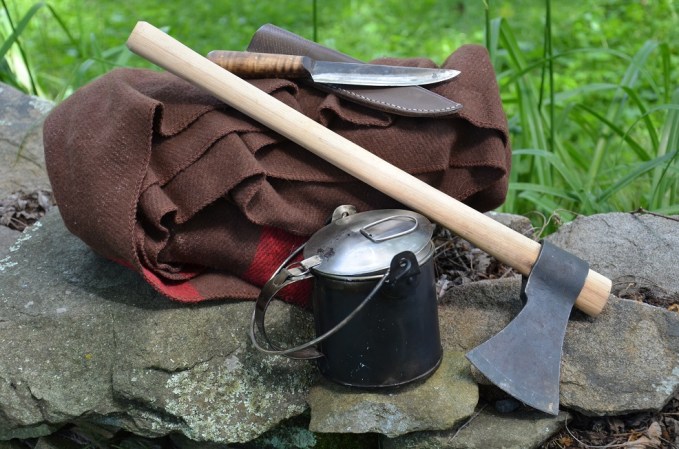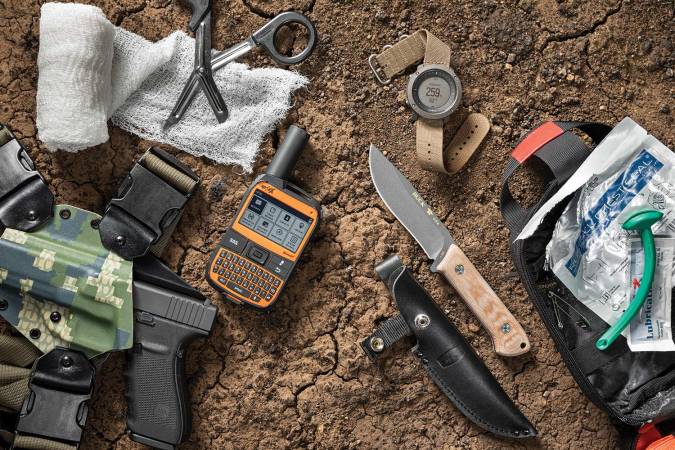We may earn revenue from the products available on this page and participate in affiliate programs. Learn More ›
For those who are unfamiliar with the use and action of a fire piston, it really is a fascinating device. The basic operation of this fire starter involves a piston slammed down into a sleeve, which generates heat and ignites some tinder imbedded at the piston’s tip. This compression ignition system should sound familiar to anyone who’s familiar with the diesel engine. Legend has it that German inventor and mechanical engineer Rudolf Diesel got the idea for his famous engine by watching a fire piston in operation.
A few weeks ago, my friend Roger showed me his repurposed Mini Maglite, which is now a fully functional fire piston. It only required a few steps and it’s a really neat project, for kids and grownups alike. Here’s how you can make your own fire piston this weekend from an old Mini Maglite body and a some basic materials from the hardware store.
The Materials
The fire piston is a terminal use for the Maglite, so you’ll needone that you don’t want to use as a flashlight anymore. You’ll also need some J-B Weld or a similar epoxy, a small round (or half-round) file, a tapered sink washer that fits very tightly inside the Maglite body, a dowel that fits inside the Maglite body, some tape, a little bit of lard, a small screw to attach the sink washer to the dowel, a screwdriver, and some char cloth (link to blog from 11-19-2012).
The Process
Remove the spare bulb from the flashlight’s end cap. Mix a little epoxy and fill the cavity, smoothing off the top to create a flat surface. Let this cure for 24 hours. Next, place a little tape on the tip of your file (to protect the Maglite body from scratches) and file down the lip at the bulb end of the flashlight body. This small lip could also be ground off with a flat file, grinder or sander. Next, screw the sink washer to the dowel and lubricate the rubber with a tiny amount of lard. I had to drill out the interior of my sink washer to create the tinder pocket, but shop around and you may find the right washer that is ready to go immediately. Once the epoxy has hardened, screw it back onto the end of the Maglite.
Using The Fire Piston
Once everything is assembled, give your fire piston a few tests by plunging the lubricated washer end of the dowel down into the flashlight body. If it pops back out a little, you’re getting good compression. Now you’re ready to try it with the char cloth. Pack a small bit of the char cloth into the hollow of the washer, covering the screw head. Wipe a tiny bit of lard around the sides of the rubber washer a€” and slam it down hard into the flashlight body. Pull it out quickly and see it your char is glowing orange. If so, then you did everything right. If not, try again. Make sure your char is good, the washer is lubed, and you’re hitting it hard. You can also use birch fungus tinder, as pictured here, with good results. Best of luck with this project, and let us know how it works out for you.










